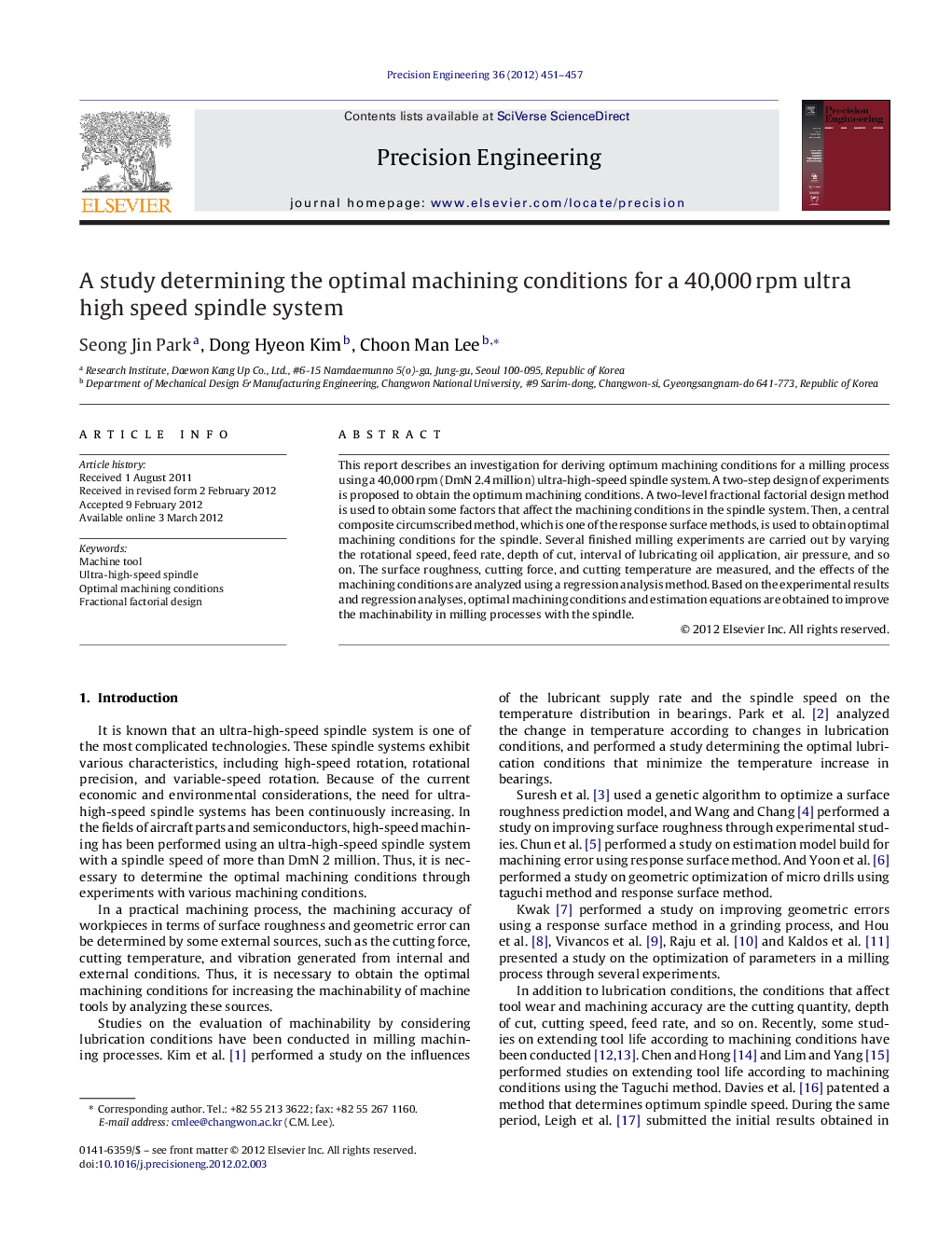| Article ID | Journal | Published Year | Pages | File Type |
|---|---|---|---|---|
| 805181 | Precision Engineering | 2012 | 7 Pages |
This report describes an investigation for deriving optimum machining conditions for a milling process using a 40,000 rpm (DmN 2.4 million) ultra-high-speed spindle system. A two-step design of experiments is proposed to obtain the optimum machining conditions. A two-level fractional factorial design method is used to obtain some factors that affect the machining conditions in the spindle system. Then, a central composite circumscribed method, which is one of the response surface methods, is used to obtain optimal machining conditions for the spindle. Several finished milling experiments are carried out by varying the rotational speed, feed rate, depth of cut, interval of lubricating oil application, air pressure, and so on. The surface roughness, cutting force, and cutting temperature are measured, and the effects of the machining conditions are analyzed using a regression analysis method. Based on the experimental results and regression analyses, optimal machining conditions and estimation equations are obtained to improve the machinability in milling processes with the spindle.
► This report describes an investigation for deriving optimum machining conditions for a milling process using a 40,000 rpm ultra-high-speed spindle system. ► A two-step design of experiments is proposed to obtain the optimum machining conditions. ► A two-level fractional factorial design method is used to obtain some factors that affect the machining conditions in the spindle system. ► Optimal machining conditions and estimation equations are obtained to improve the machinability in milling processes with the spindle.
